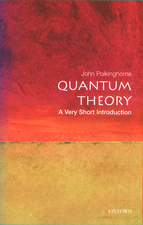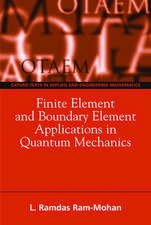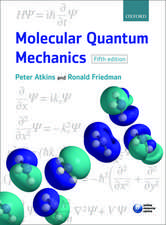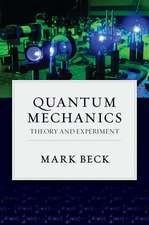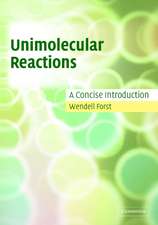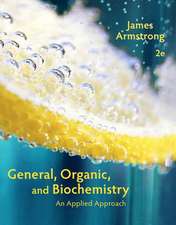Understanding Luminescence Spectra and Efficiency Using Wp and Related Functions: Inorganic Chemistry Concepts, cartea 13
Autor Charles W. Struck, William H. Fongeren Limba Engleză Paperback – 9 apr 2012
Preț: 386.81 lei
Nou
Puncte Express: 580
Preț estimativ în valută:
74.01€ • 77.49$ • 61.24£
74.01€ • 77.49$ • 61.24£
Carte tipărită la comandă
Livrare economică 05-19 aprilie
Preluare comenzi: 021 569.72.76
Specificații
ISBN-13: 9783642486319
ISBN-10: 3642486312
Pagini: 272
Ilustrații: XIII, 255 p. 43 illus.
Dimensiuni: 155 x 235 x 14 mm
Greutate: 0.39 kg
Ediția:Softcover reprint of the original 1st ed. 1991
Editura: Springer Berlin, Heidelberg
Colecția Springer
Seria Inorganic Chemistry Concepts
Locul publicării:Berlin, Heidelberg, Germany
ISBN-10: 3642486312
Pagini: 272
Ilustrații: XIII, 255 p. 43 illus.
Dimensiuni: 155 x 235 x 14 mm
Greutate: 0.39 kg
Ediția:Softcover reprint of the original 1st ed. 1991
Editura: Springer Berlin, Heidelberg
Colecția Springer
Seria Inorganic Chemistry Concepts
Locul publicării:Berlin, Heidelberg, Germany
Public țintă
ResearchCuprins
1 Introduction.- 1.1 Luminescence Centers and Models of Them.- 1.2 The Simplest Model: One Coordinate and Equal Force Constants.- 1.3 The Franck-Condon Principle for Nonradiative Rates.- 2 Harmonic Oscillator Wavefunctions.- 2.1 Hermite Polynomials.- 2.2 Generating Function for the Harmonic Oscillator Wavefunctions.- 3 The Manneback Recursion Formulas.- 3.1 Introduction.- 3.2 The Overlap Integral.- 3.3 The Generating Function for the Overlap Integral.- 3.4 The Recursion Formulas for the Overlap Integrals.- 3.5 Familiarity.- 3.6 The Orthonormality of the ANM Matrix.- 3.7 Additional Equal-Force-Constants Recursion Relations.- 4 The Luminescence Center: the Single-Configurational-Coordinate Model.- 4.1 The Model for the Radiative Rate.- 4.2 The Equal-Force-Constants Radiative Rate.- 4.3 The Unequal-Force-Constants Radiative Rate.- 4.4 The Model for the Nonradiative Rate.- 4.5 The Wp Recursion Formula.- 4.6 Explicit Series Expression for the WpFunction.- 4.7 Ip Modified Bessel Function Form for Wp.- 4.8 Limiting and Approximate Forms of Wp.- 4.9 The 5-Wp Formula for Wp,z.- 4.10 The pFormula.- 4.11 The Wp,d/dz Expression.- 4.12 The W-p/Wp and Related Ratios.- 4.13 Equal-Force-Constants Moments.- 4.14 Unequal-Force-Constants Moments.- 5 Multiple Coordinate Models of a Luminescence Center.- 5.1 The Einstein-Huang-Rhys-Pekar Single-Frequency Multiple-Coordinate Model.- 5.2 The z and d/dz Multiple-Coordinate Nuclear Factors.- 5.3 Multiple-Frequency Models of a Luminescence Center.- 6 Energy Transfer.- 6.1 The Model.- 7 Compendium of Useful Equations.- 7.1 The Wavefunctions.- 7.2 The Manneback Recursion Formulas.- 7.3 The Equal-Force-Constants Wp and Related Functions in One Dimension.- 7.4 The Unequal-Force-Constants Expressions.- 7.5 The Moments.- 7.6 Multiple Coordinate Models of a Luminescence Center.- 7.7 Energy Transfer.- 8 Contact with the Theoretical Literature.- 8.1 Unequal-Force-Constants Anm.- 8.2 Equal-Force-Constants Anm.- 8.3 The Wp Formula.- 8.4 The Wp,d/dz Formula.- 8.5 The Equal-Force-Constants Moments.- 8.6 The Unequal-Force-Constants Moments.- 8.7 The Single-Frequency-Multiple-Coordinate Derivative Operator Expressions.- 8.8 Multiple-Frequency Rates.- 8.9 Energy Transfer.- 9 Representative Luminescence Centers.- 9.1 Equal- and Unequal-Force-Constants Bandshapes and Nonradiative Transitions.- 9.2 One-and NAv-Dimensional Bandshapes.- 9.3 Vibrationally-Enhanced Radiative Transitions.- 9.4 Comparisons of Nonradiative Rate Expressions.- 10 Experimental Studies.- 10.1 Eu in Oxysulfides and in Oxyhalides.- 10.2 Oxysulfides: Other Rare Earths.- 10.3 Alkali and Alkaline Earth Halides: Sm.- 10.4 Ruby.- 11 Effects Beyond the Model: Oxysulfide: Eu Storage and Loss Processes.- 11.1 The Need for Enhancement of the Model.- 11.2 Synopsis of the Experiments to Probe the Model.- 11.3 The Model Equations: Notation.- 11.4 CTS Dissociation: The B0/G Behavior.- 11.5 The SCC Model for Understanding Storage-Loss Processes in Oxysulfide: Eu Phosphors.- 11.6 The Steady-State Efficiency and its Dependence on Excitation Intensity: B?/G.- 11.7 The n0? Achieved.- 11.8 The Rise Time.- 11.9 The Assymetry Between Phosphorescence and Build-Up.- 11.10 An Expression for Phosphorescence.- 12 The Exponential Energy-Gap “Law” for Small-Offset Cases.- 13 Conclusions.- 14 References.- Source Code.- Source of Illustrations.













